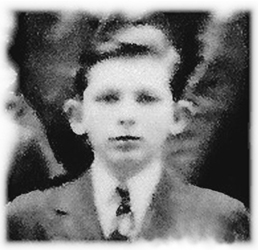

Entrepreneur, inventor of patient-monitoring equipment and cardiac-assist devices
(1928– )
The candy store, as was usual in the neighborhoods, was on the corner. It was a simple business, one that was easy for someone with very little money to start. Our neighborhood candy store, Nathan’s, along with its candy, newspapers, comic books, and soda fountain, had a public phone in a booth, on the right near the doorway. Most people before the war didn’t have phones, so the public phone was an important one.
When the phone rang, whichever kid was there first took priority. And I was usually there first. You could only take part if you were tall enough to reach the phone. I’d pick up the phone and say, “Who do you want to talk to?”
“Well, Mr. So-and-so.”
“What’s the address? What apartment?”
Another kid waiting to answer the phone would have to say, “The next one’s mine.” So the phone would ring, and let’s say it was for Mr. Schwartz on Franklin Avenue. You’d put the phone down—and it was common knowledge that if the phone was down it was in use and you didn’t hang up—and run up the street to get Mr. Schwartz. If you were lucky, he would be reasonably close by, or if you weren’t so lucky, he’d be a long block away. Invariably, for some reason, and I have no explanation why this was, the person you went to was always if not on the top floor, then close enough to that to make it exhausting. Usually there weren’t apartment buzzers in the downstairs entryways so you had to run up to the floor where the person lived. I knew that if the apartment number was a 6 I had a five-story run, or if it was a 5 a four-story run, and so on. Once in a while, I got lucky and I only had to run up two flights of stairs.
When you rang their doorbell, the person would say, “Who’s there?”
“Telephone.”
“For who?”
I don’t remember a woman actually ever being called, and I don’t remember ever getting a tip from a woman. The call was usually for what we called “the man of the house.” Sometimes I’d be lucky and could yell up the stairwell, “Phone call!” I’d then wait and follow that person back to the candy store, so nobody would misinterpret that it was somebody else’s call. It was mine.
It wasn’t mandatory, but there was a certain amount of moral pressure for the person to give you a tip for getting them. It was very rare that anybody stiffed you, you know, didn’t give you a tip. Two pennies was a weak tip. A nickel was a good tip. And a dime? I mean, you had struck gold. A dime was rare but it was still possible.
With pennies or a nickel you could get candy, but for a dime you could get a milkshake, or a malted—similar to a milkshake but with some malt powder thrown in—or an ice cream soda. But the malted was the best. It wasn’t measured, but you knew that you were going to get two glasses. That’s how large it was. That was the imperative. Two glasses full of a thick, frothy cold drink. Anybody who used a straw was out of luck because it was too thick to sip through a straw.